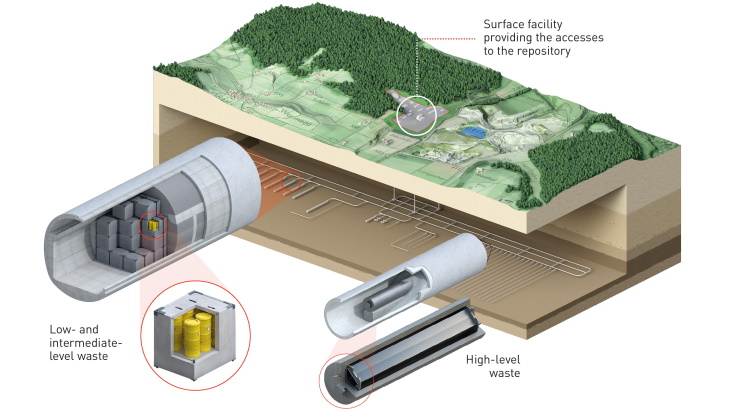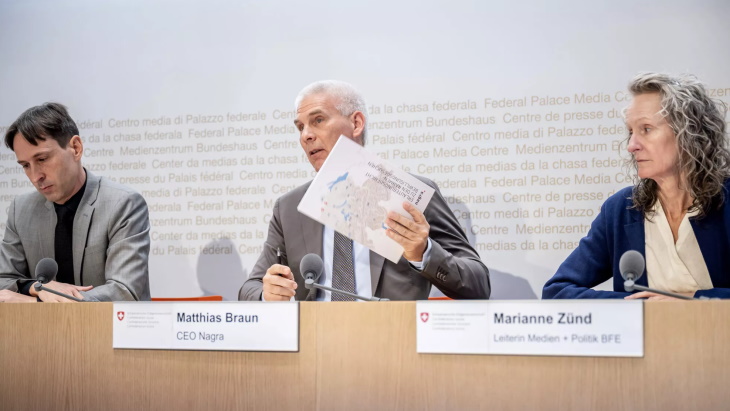Monday, November 25, 2024
Switzerland’s National Radioactive Waste Disposal Cooperative Nagra has applied to the Swiss Federal Energy Office for a general permit for the construction of a planned deep geological repository for radioactive waste and a spent nuclear fuel encapsulation plant.
_70752.jpg)
In September 2022, after a 14-year site selection process, the canton of Nagra proposed Nördlich-Regeln in northern Switzerland as the site for a deep geological repository, while a spent fuel encapsulation plant would be located in the canton’s Würenlingen. It was to be built on the existing Zwillag Intermediate Storage Facility. in canton Aargau. The entrance to the repository, a so-called above-ground facility, will be built in the Haberstal area of the Stadel region of canton Zurich.
The application for general authorization consists of a safety report and safety report, as well as a report justifying the site selection. It also includes an environmental impact study report and a report on compatibility with regional plans. For each application, Nagra defines the installation site (size and location of major structures) and the maximum limits for radiation exposure of people in the vicinity of the installation site. For deep geological disposal, the maximum capacity of the repository, exclusion criteria and temporary subsurface soil protection zones around the repository site must also be defined. Additionally, there is the concept of an observation phase and final closure of the facility. Nagra has attached the corresponding file to the application submitted on November 19th.

Swiss Repository Concept (Image: Nagra)
“We are demonstrating that this deep geological repository can be safely constructed and operated, even if it is difficult,” said Nagra CEO Mathias Braun. “We have also shown that the repository is compatible with environmental protection. With this application, we are providing the facts that Switzerland needs to decide on the safe geological disposal of its national radioactive waste.”
Federal ministries will investigate by spring 2025 whether all documents required by law have been submitted. Nagra will then publish the entire application and all scientific reports online. This will happen three years earlier than required by law. The authorities will now begin a detailed investigation of the application. The Swiss Federal Nuclear Safety Inspectorate (ENSI) and the Federal Commission for Nuclear Safety (CNS) will then begin examining the application. This evaluation is expected to be completed by 2027.
The Swiss Federal Energy Agency issues general permits based on the review carried out by the agency and, in particular, on the opinions of the relevant federal ministries and the cantons. According to current plans, Congress is expected to decide on the application in 2029 and Congress in 2030. A referendum is scheduled to take place in 2031.
Nagra said: “With this measure, Nagra hopes to enable early and meaningful discussions on the project in parallel with the technical review of the application by the authorities. Nagra will be open to questions and discussions. “I guess so.”
“The transgenerational project of deep geological repository needs to be discussed as widely as possible and justified as the result of a direct democratic process. In Switzerland, this includes a referendum. ” Brown pointed out.
Once the general license for the repository comes into effect, geological investigations will be carried out underground in the burial area (through the establishment of an underground laboratory), with the aim of gaining deeper knowledge for the future. Building a repository. You can then submit an application for a building permit, followed by an application for an operating permit. According to current plans, the repository could be operational from 2050 and the first radioactive waste could be stored there.




